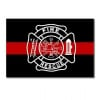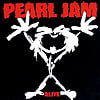How to get distortion w/o a pedal?

MichaelMcKevin
Posts: 1,161
So I've been playing with my new Traynor (which i love, thanks for the recommendations) and I'm trying to get a more distorted sound out of it. I know the amp can only take it so far, but I was lookin' for like a Neil Young or a Warren Haynes type sound, cuz i know Neil doesn't use any distortion pedals. Tampering with the Gain on channel 1 doesn't seem to give me a whole lot of bite.
Camden I '06, Camden II '06, Bonnaroo '08, Camden I '08, Camden II '08, Philly Spectrum II/III/IV '09, MSG I '10, MSG II '10, Made In America '12, Wrigley '13, Brooklyn II '13, Philly I '13, Philly II '13, ...
Post edited by Unknown User on
0
Comments
-
A lot of Neil's distortion comes from his specific amp and guitar. I'm not familiar with Traynor's, but I don't think they have the kind of overdrive capabilities to get that kind of sound out of them. I could be wrong.It's a town full of losers and I'm pulling out of here to win0
-
Hit the boost button, and crank the fucker!Believe me, when I was growin up, I thought the worst thing you could turn out to be was normal, So I say freaks in the most complementary way. Here's a song by a fellow freak - E.V0
-
keeponrockin wrote:Hit the boost button, and crank the fucker!
I do this by hitting the boost button on the amp itself, and then having both channels 1 and 2 lit on the footswitch? Pardon my ignorance but this is what I know/maybe think as of now...
Channel 2(no lights on footswitch are on)- Clean
Channel 1 (Light 1 on footswitch is red)- Lead w/ gain
Channel ? (Both 1 and 2 are lit on footswitch)- Boost?
I'm having trouble getting the volumes to be consistent, for example, everytime i switch from Lead to Boost or Clean-Lead, the volume is also significantly louder.Camden I '06, Camden II '06, Bonnaroo '08, Camden I '08, Camden II '08, Philly Spectrum II/III/IV '09, MSG I '10, MSG II '10, Made In America '12, Wrigley '13, Brooklyn II '13, Philly I '13, Philly II '13, ...0 -
Amp distortion is nearly totally dependent on the amp. To put it simply, a lot of amp distortion means it has a lot of gain stages built into one or more channels. HAving said that, the advice to push all teh boost buttons , and crank the fucker is very sound. The more you abuse the pre-amp capability you have, the more break-up you will get. Using higher gain pups will add a bit to this. Can't remember what guitar you have but I have 2 red lace sensor strat pups for sale, cos teh rebuild project I was doing has been canned by teh purchase of an LP BFG.
I am a sucker for tube-pre-amp, so I have The H&K tri-amp to do that. There a few stand alone tube pre-amps worth looking a though. H&K Tubeman is basically the preamp from my head , in a pedal, Mesa V-twin, pretty cheap, Mesa Tri-axis( I am buying one of these in the next few days) Now i know this is not teh forum for Mesa loving, but Randy did invent cascading gain, and does know a thing or two about it. The Recto pre-amp is also very good. They all have superb cleans as well as a huge variety of gain sounds. All of these can be plugged directly into the effects return for an all tube tonefest.
The volume boost you are getting is what happens when you add another gain stage. I am amazed at how many people get confused by this. It is the main reason I don't use pedal, preferring multi-channel amps, where you can set teh individual cahnnels up to prefered gain, adjust channel volumes so they are all teh same, then adjust volume using master volume. ONe of the pre-amps I mentioned will allow you to do this.Music is not a competetion.0 -
You gotta turn it up...real loud and whatnot.0
-
To get real breakup you need to crank the amp past 5....which is LOUD on a 40w tube amp.
An antenuator will allow you to crank the amp and control the volume, so you can practice.
I just got a Weber MiniMass antenuator.....good stuff! The clean channel sounds awesome when it breaks up!0 -
The volume thing explains a lot. This is my only amp and do to living in an apartment, I haven't really had the volume past about 4 yet.Camden I '06, Camden II '06, Bonnaroo '08, Camden I '08, Camden II '08, Philly Spectrum II/III/IV '09, MSG I '10, MSG II '10, Made In America '12, Wrigley '13, Brooklyn II '13, Philly I '13, Philly II '13, ...0
-
I forgot to mention, you turn the gain up first, then set the volume, you will get some pre-amp noise once you max the gain. HIgher distortion pre-amps, either intrernal or external allow better distorttion at lower volumes.Music is not a competetion.0
-
Wow just cranked it for about 30 seconds and what a diff the volume does make with the gain up. Wish i could do that more often. Thanks for the help.Camden I '06, Camden II '06, Bonnaroo '08, Camden I '08, Camden II '08, Philly Spectrum II/III/IV '09, MSG I '10, MSG II '10, Made In America '12, Wrigley '13, Brooklyn II '13, Philly I '13, Philly II '13, ...0
-
GivenToCarve wrote:Wow just cranked it for about 30 seconds and what a diff the volume does make with the gain up. Wish i could do that more often. Thanks for the help.
Yeah, gain works like a multipler. Whatever volume you have set will be multipled by the gain factor. The more gain stages you have, the more multplication factors you have, so volume builds very quickly once you have the gain up a bit. If you have distortion at the first gain staeg, then you get really filthy as the final product.Music is not a competetion.0 -
"our amps go to 11.""Tonight we're just gonna play you some good old American Rock and Roll." tom petty-7-15-050
-
Neil would play so heavy that his tubes actually caught fire and someone would be behind the amp putting out the stuff. He got amazing tone. I can't remember where I read it but it seems cool. Problem is that the tubes were destroyed after the show.Grand Rapids '04, Detroit '06
JEFF HARDY AND JEFF AMENT USED TO LOOK THE SAME
"Pearl Jam always eases my mind and fires me up at the same time.”-Jeff Hardy0 -
GivenToCarve wrote:So I've been playing with my new Traynor (which i love, thanks for the recommendations) and I'm trying to get a more distorted sound out of it. I know the amp can only take it so far, but I was lookin' for like a Neil Young or a Warren Haynes type sound, cuz i know Neil doesn't use any distortion pedals. Tampering with the Gain on channel 1 doesn't seem to give me a whole lot of bite.
Take the volume up to about 5 the gain up to around 7.5 the treble to about 6 mids to about 5 and turn the bass up until it sounds full with no flub.
The preamp drives the power amp into overdrive....that's what you're looking for.
Neil actually has a special device called "the whizzer" with several footswitches that turn the knobs on his tweed deluxes to various settings. Everything has it's own place in the tone but ultimately you need to get the amp's power stage into overdrive. This can be accomplished by turning the amp to 5 or more generally and "pushing it" into overdrive with the gain stage.
Neil drives the hell out of those amps, he has well broken in loose speakers and in the case of that less paul the P90 is about to fall out.
There is no real right or wrong way to do it. Mesa uses several cascading gain stages in the preamp, some use pedals, some use hot pickups and big strings, some use a variety of different gain stages, some use low power amps and crank them, some use high power amps with a lot more of the preamp tone coming through etc. Everything in your rig that is in the line from your fingers through the speaker can effect the tone. Tube amps start to get that great smooth detailed liquid distorted tone at the point they start to overdrive and higher.
On channel two with the amp volume up past 5 and the gain past about 4 or 5 you should get some semblance of the tone you seek without the use of a pedal, if there still is not enough distortion there crank the gain up a little more. If that dosen't work you might want to try a pedal especially a good quality tube overdrive like the EH Hottubes or the Soldano Supercharger or the aforementioned Mesa's or the Budda.My Girlfriend said to me..."How many guitars do you need?" and I replied...."How many pairs of shoes do you need?" She got really quiet.0 -
xtremehardy388 wrote:Neil would play so heavy that his tubes actually caught fire and someone would be behind the amp putting out the stuff. He got amazing tone. I can't remember where I read it but it seems cool. Problem is that the tubes were destroyed after the show.
That's completely badass. I've cranked my 50 watt 212 Ampeg reverberocket to 10 before, with humbuckers, standing two rooms away with doors closed with a 20 foot cable, and it was still scary. I'm glad my tubes didn't catch fire.Riverside.. LA.. California. EV?0 -
Remember, on Traynors the first channel is the overdrive!
Now thats what I'm fuckin talkin about!Believe me, when I was growin up, I thought the worst thing you could turn out to be was normal, So I say freaks in the most complementary way. Here's a song by a fellow freak - E.V0 -
keeponrockin wrote:Remember, on Traynors the first channel is the overdrive!
Now thats what I'm fuckin talkin about!
Is channel 1 and 2 together just like a boost?Camden I '06, Camden II '06, Bonnaroo '08, Camden I '08, Camden II '08, Philly Spectrum II/III/IV '09, MSG I '10, MSG II '10, Made In America '12, Wrigley '13, Brooklyn II '13, Philly I '13, Philly II '13, ...0 -
GivenToCarve wrote:Is channel 1 and 2 together just like a boost?
No... The first button on the footswitch, when one light on, is channel 1. When you hit the second button it gives it the boost, though channel 2 still isn't on.Believe me, when I was growin up, I thought the worst thing you could turn out to be was normal, So I say freaks in the most complementary way. Here's a song by a fellow freak - E.V0 -
armanHammer wrote:That's completely badass. I've cranked my 50 watt 212 Ampeg reverberocket to 10 before, with humbuckers, standing two rooms away with doors closed with a 20 foot cable, and it was still scary. I'm glad my tubes didn't catch fire.
This is because your amp is a Class A/B, which are a lot more efficient, and produce a lot less heat than Class A amps. I think it is usually the circuit boards or amp casing that catches fire, not the tubes. There isn't much that can burn in a glass vacuum tube. Apparently the newer Fenders, like the Blues Junior/Hot Rods etc can get pretty hot too. The local amp guru in this area says he has seen a few which have nearly caught fire. MInd you, he rags on pretty much everything, cos he only sees the problems.
For interest , there is an excellent article on the Mesa web-site about this stuff, which includes an interesting anecdote about Randy doing some work to reduce hum for Neil Young during one of his earlier tours, possibly Rust era.Music is not a competetion.0 -
With that amp, the clean channel is by itself. The gain channel has it's first stage, which at a lower volume won't create buzzy or overly gainy overdrive. The boost function works on the gain channel, and with the YCV40, will be significantly louder, but will give it a lot more gain.
If you want to get a more gainy sound out the lead channel at a reasonable, even extremely quiet volume, you'll have to put an overdrive or distortion pedal in front of the amp. What you're trying to re-create with the pedal is your amp at a louder volume with a medium/low gain sound already coming out of it. Put that in front of the gain channel, and you should get a fairly overdriven sound, especially with the boost on.
Gotta remember, to get 40 watts of tubes to saturate and give a wicked sounding distortion, it's going to have to cranked up. I'm never happy with my practice sound, so I just use pedals at home to get gain. An attenuator is an option, but it's expensive, and will eat your tubes faster than you may like.
When I use my YCV80 live, and in practice, I have it cranked up loud enough that I lose headroom on the clean channel, and am getting power tube distortion already. Then I throw my Fulldrive II pedal in front and just take it to sonic proportions that I can't get at home. I don't use the lead channel when playing live because I find it does get muddy, and sounds almost too modern for my liking. The clean channel at extremely loud volumes with humbuckers takes on a bassman/plexi sort of crunch, so it's perfect for a nice OD pedal in front.0 -
pjfan020 wrote:"our amps go to 11."
"why dont you just make 10 louder"
"well...cause...um...cause our amps go to 11"2005.09.04
2005.09.05
"how many people did die from that?...did P.Diddy kill them?" - Eddie Vedder 2006.02.190
Categories
- All Categories
- 149K Pearl Jam's Music and Activism
- 110.2K The Porch
- 280 Vitalogy
- 35.1K Given To Fly (live)
- 3.5K Words and Music...Communication
- 39.3K Flea Market
- 39.3K Lost Dogs
- 58.7K Not Pearl Jam's Music
- 10.6K Musicians and Gearheads
- 29.1K Other Music
- 17.8K Poetry, Prose, Music & Art
- 1.1K The Art Wall
- 56.8K Non-Pearl Jam Discussion
- 22.2K A Moving Train
- 31.7K All Encompassing Trip
- 2.9K Technical Stuff and Help




